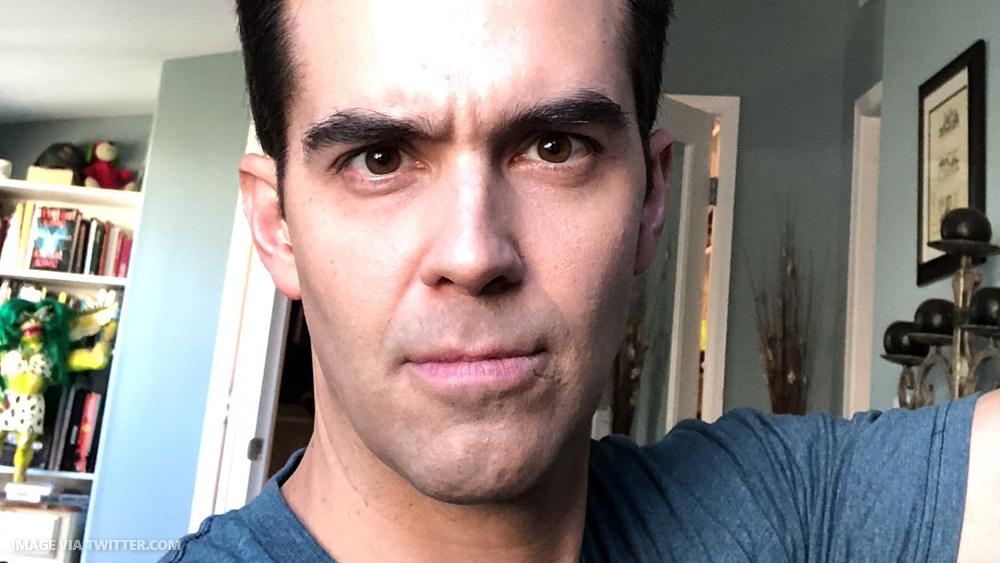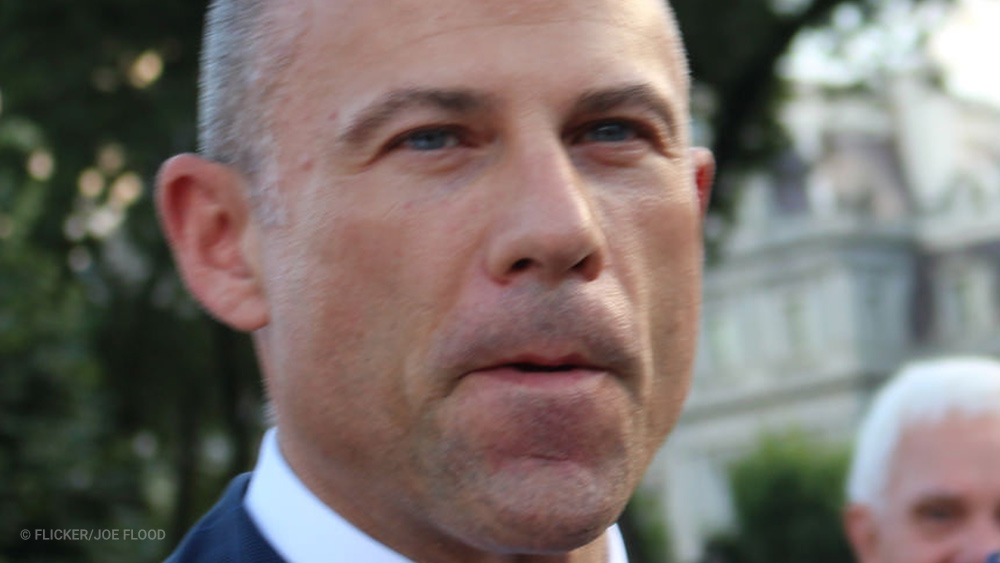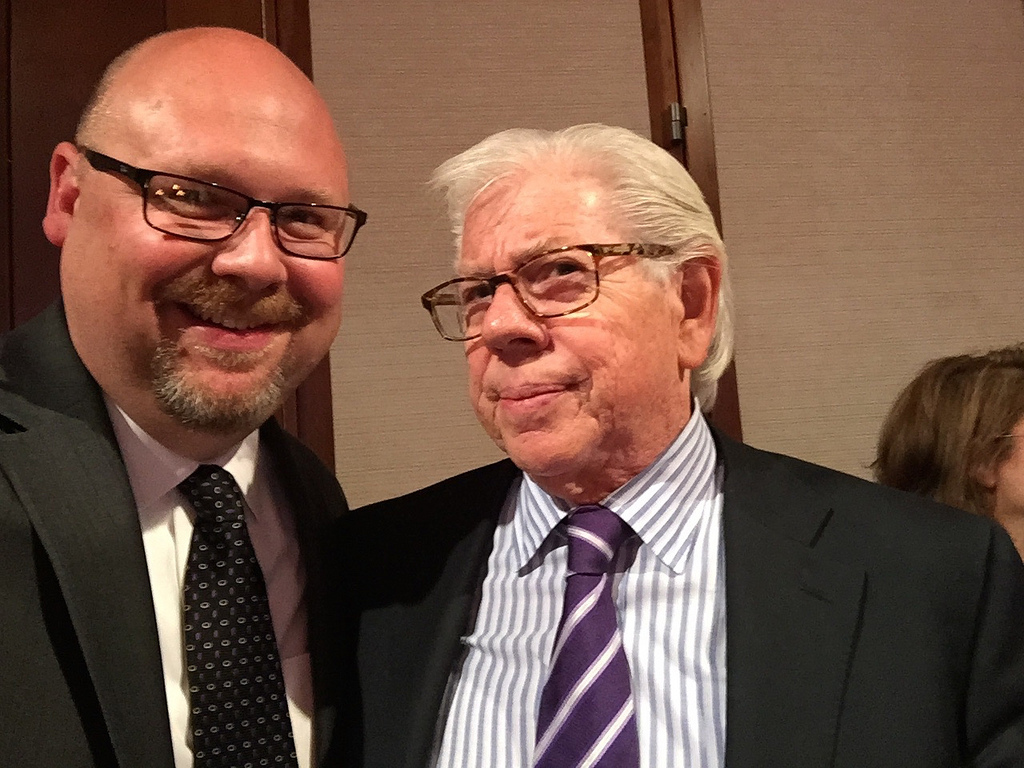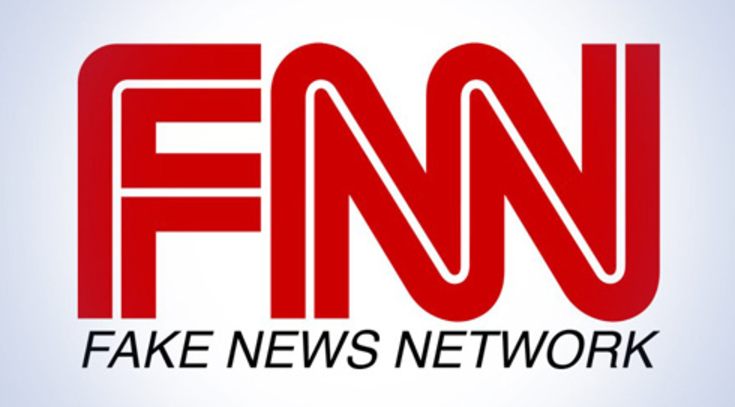Decentralization and the structure of news consumption
07/16/2018 / By Mike Adams
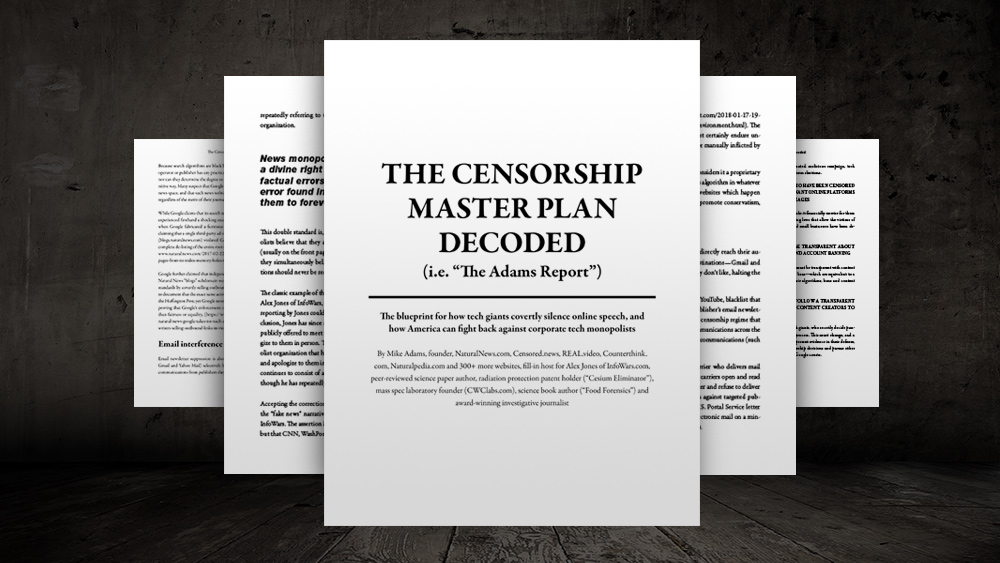
This is a partial reprinting of “The Censorship Master Plan Decoded,” available at this link (PDF).
The Censorship Master Plan Decoded (i.e. “The Adams Report”)
The blueprint for how tech giants covertly silence online speech, and how America can fight back against corporate tech monopolists
To fully grasp how news censorship is achieved, it’s crucial to understand the ways in which news consumers come into contact with news sources and information. The method of contact determines the most effective method of censorship, as you will see explained below.
Direct URLs and Apps
This is achieved when users open a web browser and directly enter the URL of the website they wish to visit (i.e. www.trump.news). This approach is decentralized and puts consumers in control. However, many news consumers are surprisingly lazy, and some don’t even know the internet exists outside of Facebook. Accordingly, many internet users rely on other aggregators or “feeders” to feed them news articles, removing control from the individual.
Direct Access can also be achieved by download an app for a news publishers and running that app on a mobile device. Google and Apple, not surprisingly, have censored certain apps to crush their competition and block consumers from accessing information that Google doesn’t want people to see. For example, GAB.ai saw its app blocked by Google under the justification that GAB.ai allowed people to express “hate speech” on its platform.
News Aggregators
News aggregators include the Drudge Report (www.DrudgeReport.com), Google News, Censored.news (owned by this author) and others. News aggregators serve a utility function of compiling news headlines from many different sources, potentially saving time for news consumers. However, while some news aggregators are entirely uncensored and pull every headline from the sources which are scanned (such as Censored.news), most news aggregators make either manual or human-programmed, automated editorial decisions, compiling a list of desired headlines to show visitors (Drudge Report, Google News, etc.)
News aggregators can save time for users and help them discover news sources they may not have otherwise found on their own. However, they cede some level of control to the aggregation entity, taking away power from the individual and concentrating it in the hands of the aggregator who can engage in “censorship by omission” and simply refuse to list any news source they don’t like. Technically, because no news aggregation website can possibly cover every news source on the ‘net, all news aggregators assert some level of editorial control, merely by deciding which news sources to include.
Google News, famously, purged itself of nearly all independent media sources beginning in 2012, leading to it becoming a homogenized echo chamber of controlled media monopolists.
Newsfeeds
Facebook is the best example of a “newsfeed,” which presents content (videos, links, images) for end user consumption but controls the feed to down-rank and “shadow ban” certain sources which are targeted with punitive ranking algorithms. For example, Facebook allows end users to “like” or follow certain news publishers such as InfoWars or Natural News. However, when InfoWars posts a new article on Facebook, the distribution of that article is typically 99.9% suppressed (shadow banned), allowing the article to only appear among 0.1% of the followers who have raised their hands and asked to receive InfoWars articles.
Twitter is, in essence, a feed system where users are able to follow particular twitter users or monitor hashtag-containing tweets. Just as with Facebook, Twitter can also “shadow ban” users by refusing to distribute their tweets to all their twitter followers. The “shadow” part of shadow banning comes from the realization that the original author of the tweet has no idea their message is being largely banned. From their point of view, the tweet was accepted and broadcast to all their followers, but in reality, it may have only reached a tiny fraction of their followers because the Twitter corporation disagrees with the content of what they sought to express.
The mechanism of banning certain sources in “feeds” is a black box algorithm, secretly carried out using unknown variables or outcomes. Companies like Facebook refuse to disclose the inner mechanisms or variable weighting of their algorithms, and such algorithms may in fact consist largely of an internal list of “Which publishers do we hate today?”
Public Platforms / Social Media
Public platforms such as YouTube and Facebook claims to provide independent content creators a public space through which they can broadcast their own content to followers. Through this content channel, content creators are able to post various types of content, depending on the platform in question (photos, videos, articles, tweets, links, etc.).
Public platforms achieve a tipping point of utility in the minds of users when a critical mass of other users are using the same platform, allowing for a very large user base to intermix their interests, opinions and conversations. Getting big, in other words, makes the public platform website even more dominant in the industry via a self-reinforcing feedback loop of perceived public utility. (In other words, nobody wants to visit a social media website if nobody else is using it. Similarly, no one wishes to visit an unpopular dance club. People go where others congregate, precisely because they are seeking social interaction.)
During their growth, public platforms asserted the promise that content creators would not be censored or blacklisted without just cause. This allowed YouTube, Facebook, Pinterest, Snapchat and other similar sites to attract enormous numbers of users. Once the critical mass of utility was achieved, many of these public platforms began selectively shadow banning or deplatforming selected users based on the politics of their content, thus violating the original promise made by the platforms.
On the positive side, public platforms allow one individual to potential reach a very large established audience without needing to build their own publishing sites or services, but they also subject individual content creators to sudden and unjustified termination, shadow banning, “doubt interruptions” or other forms of oppression and censorship (see complete list in the next chapter).
In essence, as the tech giants are currently operated, whoever controls the platform ultimately controls the speech which is allowed the be broadcast on that platform. For the internet to survive as an infrastructure rooted in individual liberty and freedom of speech, the status quo of platform censorship must obviously be wholly reformed.
Search engines
Many news consumers use search engines (like Google, Bing, DuckDuckGo) to locate and read news articles. Search engine ranking algorithms are a “black box” that’s routinely manipulated to down-rank certain independent news sources which are targeted by the tech giants.
Without needing to outright ban a particular source, a search engine operating with nefarious intent can down-rank a particular source to the point of online oblivion. Internet user behavior tells us that news sources which do not rank in the first page of search results receive almost no traffic from such search results.
This author believes that Google assigns “bonus” ranking boosts to manually-chosen websites such as CNN.com, granting them heightened visibility that was not earned through the merit of their content. Search algorithms are, in essence, weighted by an “authoritative” score which is largely determined by the personal opinions of Google engineers and management, most of whom tend to strongly lean toward a left-wing bias as evidence by the James Damore lawsuit against Google (https://www.newstarget.com/2018-01-17-19-insane-tidbits-from-james-damores-lawsuit-about-googles-office-environment.html). The end result is that conservative or independent news sources almost certainly endure unearned punishments in Google’s ranking algorithm, all of which are manually inflicted by human processes.
To date, Google has refused to disclose its ranking algorithm and considers it a proprietary secret. The secrecy, of course, permits Google to manually tweak its algorithm in whatever way it wishes, including exerting unearned punitive bias against websites which happen to exist on Google’s ever-expanding “hate list” of websites which promote conservatism, natural health or other “banned” topics.
Email Newsletters
Many independent media publishers rely on email newsletters to directly reach their audience via email. However, two of the most prominent email destinations — Gmail and Yahoo Mail — systematically block emails from content sources they don’t like, halting the delivery of such emails to their email users.
Thus, Google can exert the power to ban a publisher’s channel on YouTube, blacklist that same publisher’s web pages on Google.com and even block that publisher’s email newsletters from being delivered to gmail.com users. This is a “triple threat” censorship regime that grants Google an alarming level of control over the delivery of communications across the internet, even to users who have specifically asked to receive such communications (such as email newsletters to which they have subscribed).
In essence, Gmail is claiming to serve the function of a postal carrier who delivers mail you’ve requested to your mailbox. But during the delivery, Gmail carriers open and read your mail, and if they don’t like what they read, they trash your letter and refuse to deliver it. Google actively and mercilessly pursues this interference action against targeted publishers on a daily basis. While interfering with the delivery of a U.S. Postal Service letter is a felony crime, Google actively interferes with the delivery of electronic mail on a minute-by-minute basis, with no apparent criminal liability whatsoever.
This report reprint continues at this article link (pending).
Find the full report at this link (PDF).
See the video presentation of this report by Mike Adams at the following Brighteon.com link:
https://www.brighteon.com/channel/realvideo
Tagged Under: Censorship, deplatforming, discrimination, Facebook, First Amendment, free speech, freedom, Google, Liberty, Mike Adams, monopolies, shadow ban, society, tech giants, Twitter, YouTube




